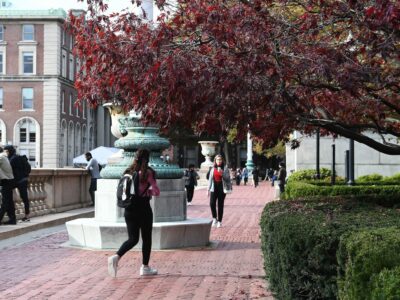
Where roads cross the Bic River in the country of Moldova, you will likely notice “Love Your River” signs. It is a simple unclaimed request, devoid of self-promotion yet very personal to all that read it. In these three simple, yet profound words, those signs tell the story of the National Environmental Center (NEC), a four member NGO working to persuade their country to adopt water stewardship in a place where both political and physical infrastructures have long been neglected. This past August, members of the Columbia Aquanauts student group traveled to Moldova for a week to work with NEC and learn about the country’s environmental issues.
As the students toured the waterway, it was immediately evident that environmental problems with which Moldova is contending. The Bic’s headwaters are born north of the capital city of Chisinau. From here, the water meanders downwards slowly accumulating and forming the river where it goes on to support agriculture and aquaculture, absorbing high levels of polluted discharge. With little riparian buffer zones to mitigate these effects, a bright green hue replaces the natural clarity of the river through a process known as eutrophication or pollution induced algal blooms. As it passes through Chisinau, the river picks up harmful heavy metals and toxins from the tanneries, chemical cleaning, and nickel industries. The stark contrast in water quality is readily apparent at the southern end of Chisinau where 130,000 cubic meters of partially treated sewage is discharged into the Bic River daily.
The magnitude of the environmental catastrophe is most apparent at the confluence of the Bic and Dniester River. Once teeming with trout, this area is now reduced to a foul smelling, lifeless, and viscous black fluid, which is still used to irrigate vegetables that feed the community. The obvious consequences of these human activities and the threat they pose to life are the basis for NEC’s big question: how can you sustain life if you do not love your river?
Since NEC’s main focus is creating awareness and education on environmental issues to support the next generation of environmental stewards, the Aquanauts also spent time with one of NEC’s partners, a local Eco-school that incorporates biological water quality monitoring as part of the school’s curriculum. With NEC’s guidance, students at the school have presented their findings to town mayors throughout the Bic River Watershed – findings that have led to segments of the river being restored.


While NEC and the students have had some success, they have also been criticized by the government for their use of biological testing to monitor the river and some of their suggestions have been dismissed. From the challenges that these students face, it is apparent that a more accurate and scientific means of measuring pollutants is needed to help support the youth in their campaign to convince politicians to make water quality a priority.
As a water-centered group working on water quality and scarcity issues, the Aquanauts are committed to supporting the NEC and their students in a collaborative exchange. By introducing chemical water quality testing and creating lesson plans to incorporate into their curriculum, the Aquanauts hope to provide more rigorous scientific data to further the students’ cause in restoring the Bic River. The Aquanauts are also expanding the current body of knowledge on water-related issues by working with local universities to establish a new Aquanauts chapter.
The Aquanauts were able to join NEC’s cause thanks to Robert Loftur-Thun, the executive director of the EcoCatalyst Foundation (ECF), which is NEC’s biggest financial supporter. The group’s goal of becoming long-term collaborators in this project is supported by ECF’s model to actively connect beneficiaries with supporting resources and to facilitate partnerships for sustainable development.
The Aquanauts’ trip served as their first step towards forming a sustainable partnership with NEC by gaining an understanding of the region and the people with whom they will be collaborating. The Aquanauts hope to eventually expand these international networks of students, researchers, and advocates to achieve clean water and access for everyone.



